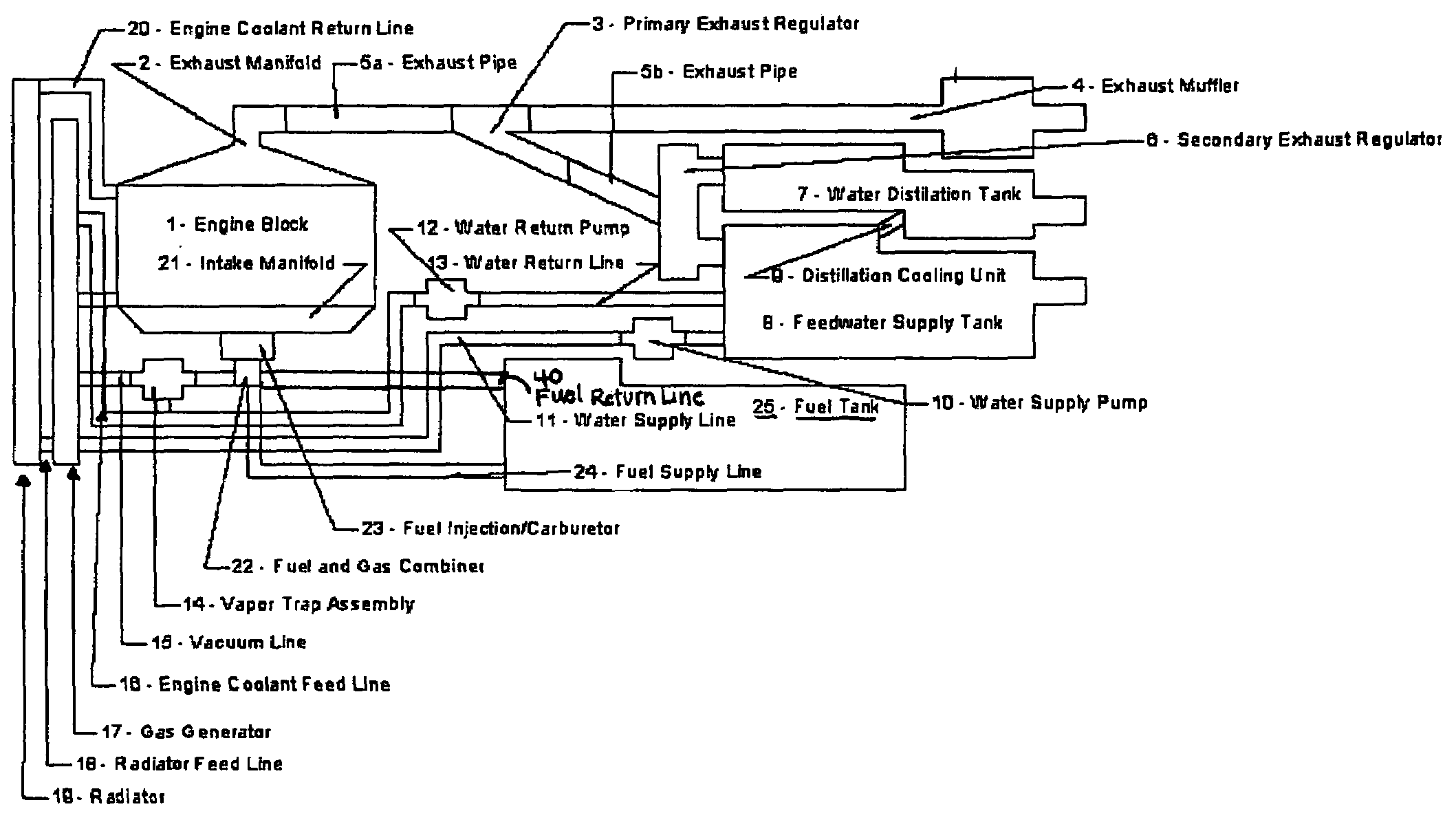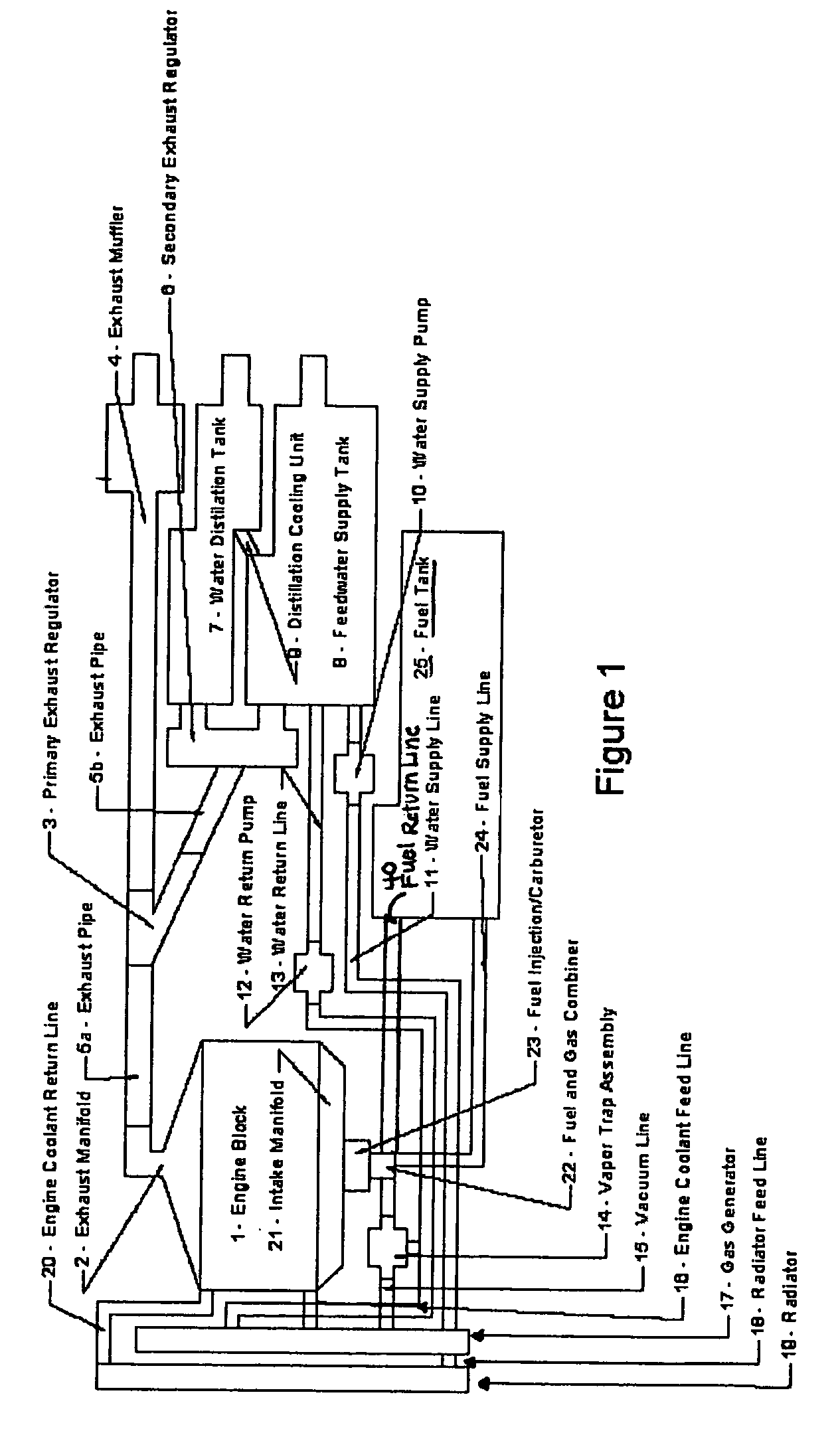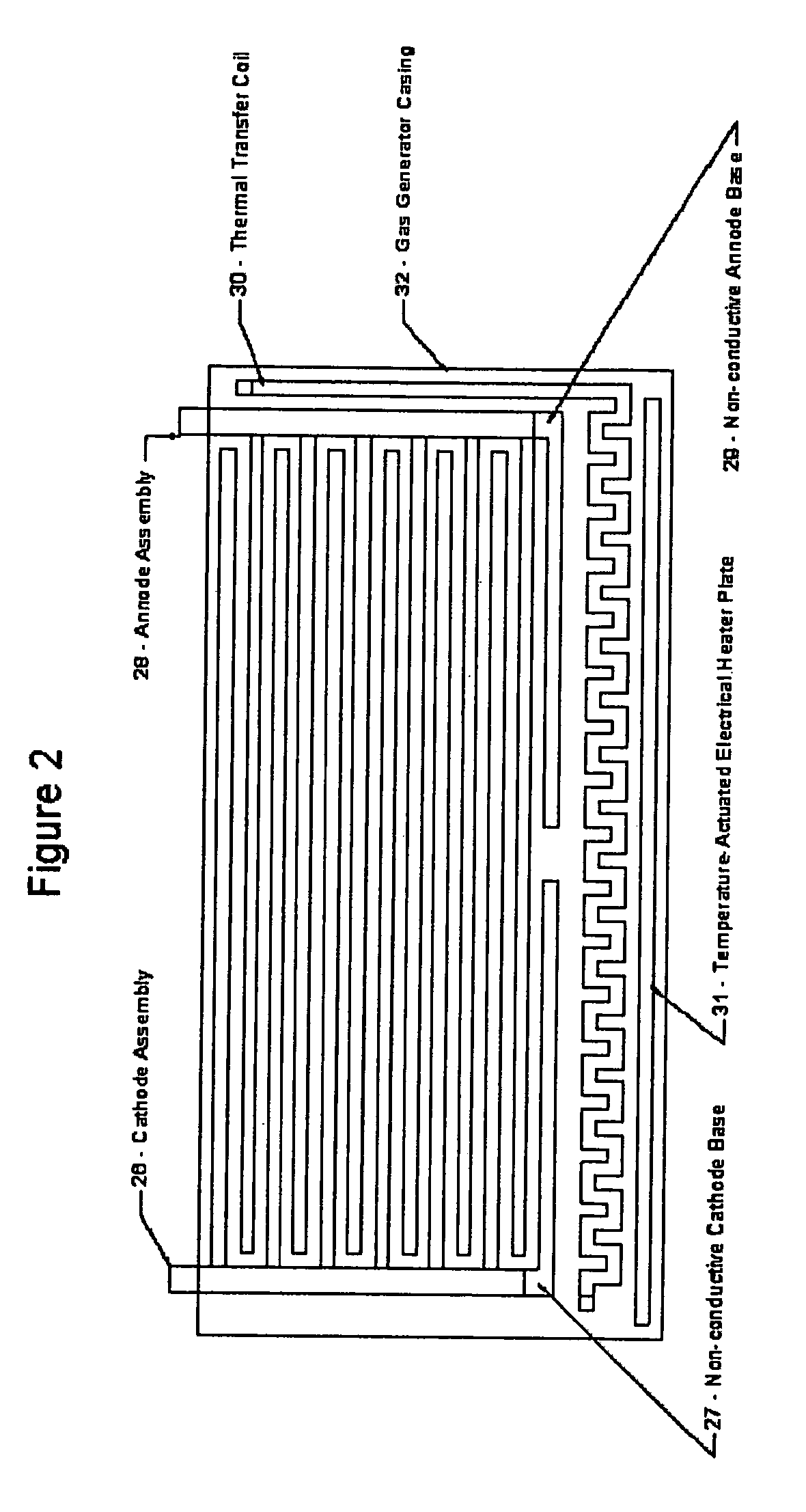Hydrogen oxygen generation system for an internal combustion engine
a technology of hydrogen oxygen and internal combustion engine, which is applied in the direction of transportation hydrogen technology, machines/engines, mechanical equipment, etc., can solve the problems of loss of efficiency, inadequate efficiency and economic returns, and limitations of all
- Summary
- Abstract
- Description
- Claims
- Application Information
AI Technical Summary
Benefits of technology
Problems solved by technology
Method used
Image
Examples
Embodiment Construction
[0018]Every internal combustion engine generates heat energy as a by-product that is lost to the environment. The heat loss occurs in three primary ways; via inherent or forced air cooling, heat exchange from the engine block via cooling jacket water, and the loss of heat through the exhaust manifold and exhaust system. The present invention uses ambient, inductive and conductive thermal transfer processes to capture the internal combustion engine's generated heat. The captured heat is used to heat water, and the heated water is then subjected to electrolysis to generate hydrogen and oxygen gases in a quantity sufficient to either supplement an internal combustion engines existing fuel source, or to act as the sole fuel source, such as in a lightly loaded combustion engine environment. As generally illustrated in FIGS. 1–3, this invention uses an internal combustion engine's cooling jacket water, exhaust gases and radiant engine heat in order to heat (such as inducing a boiling stat...
PUM
 Login to View More
Login to View More Abstract
Description
Claims
Application Information
 Login to View More
Login to View More - R&D
- Intellectual Property
- Life Sciences
- Materials
- Tech Scout
- Unparalleled Data Quality
- Higher Quality Content
- 60% Fewer Hallucinations
Browse by: Latest US Patents, China's latest patents, Technical Efficacy Thesaurus, Application Domain, Technology Topic, Popular Technical Reports.
© 2025 PatSnap. All rights reserved.Legal|Privacy policy|Modern Slavery Act Transparency Statement|Sitemap|About US| Contact US: help@patsnap.com



